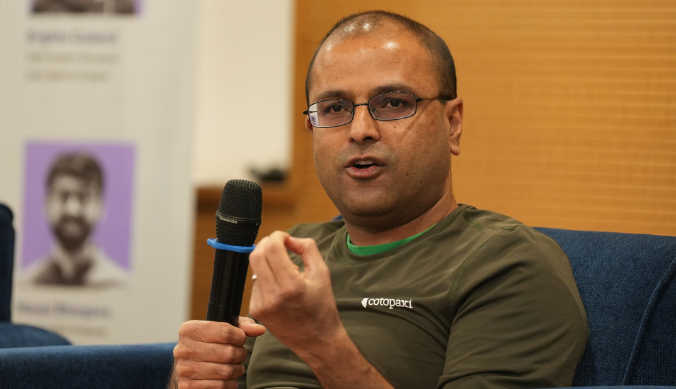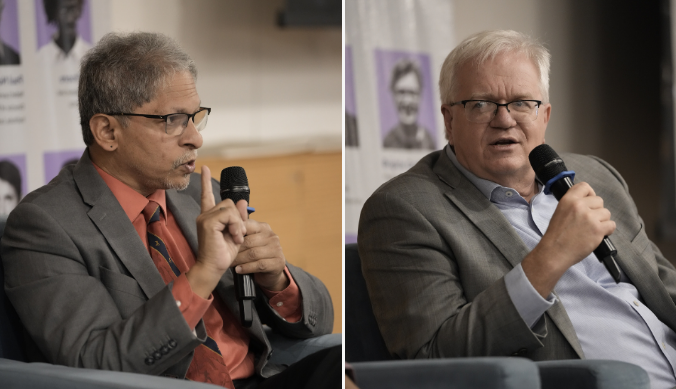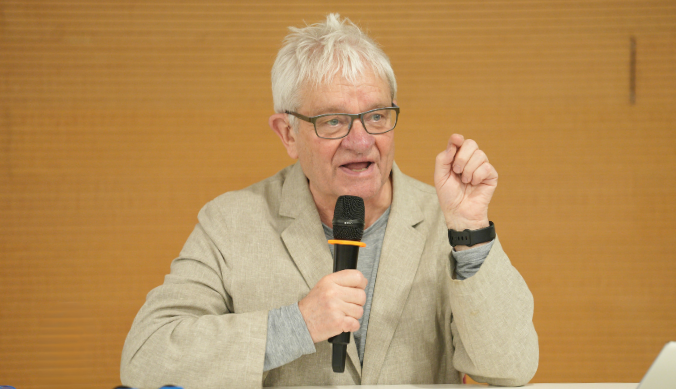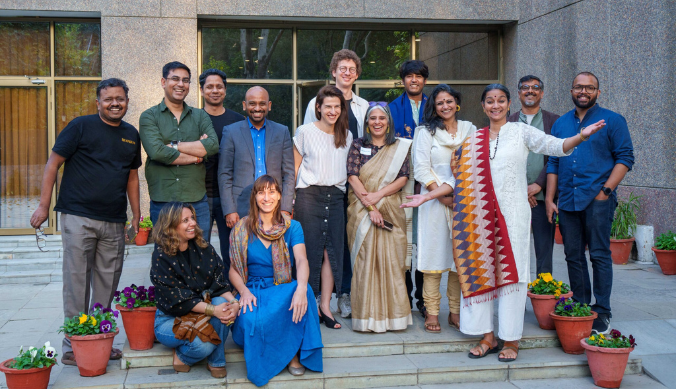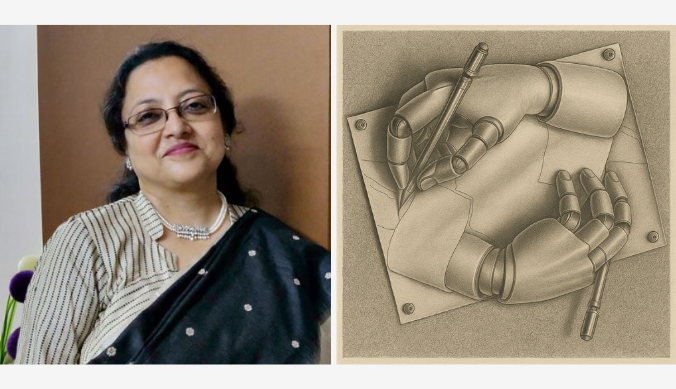“Think, Don’t Just Follow”: Haruzo Hida on the Art of Mathematics
In this engaging conversation, Professor Haruzo Hida reveals how classical philosophy, artistic intuition, and a lifelong curiosity shaped his mathematical practice.
Professor Haruzo Hida, a world-renowned mathematician and Professor Emeritus at UCLA, is best known for his groundbreaking work in number theory, especially on p-adic modular forms. With over 40 years of experience, he has helped shape some of the most important ideas in modern mathematics. During his visit to Ashoka University, Professor Hida spoke about the creative process behind mathematics, the joy of independent thinking, and why beauty and structure matter as much as logic. In this conversation, he shares some pivotal moments from his journey, the influence of classical philosophy, and what young mathematicians should keep in mind as they explore the world of numbers.
What first drew you into the beautifully complex world of mathematics?
Haruzo: Well, I don’t think mathematics is very beautiful, but it’s very attractive, in the sense that you think something, and you create something, and you rigorously prove something. These three points are very different from other sciences. So it is just a mathematician’s creation. All other sciences study the object. This object you can’t change. But mathematicians create an entire sort of universe, and the induction is very attractive, I think.
Can you explain how the study of number theory applies to real life?
Haruzo: That’s a difficult question. Gauss once said that this is the queen of mathematics, so it’s useless for the application, but it’s sort of the most well-organised subject in mathematics. Therefore, we pursue a sort of mathematics, we have a kind of organisation, either geometric, analytic, or statistical. We cover anything in mathematics. So in a strange sense, it’s a kind of ultimate applied math. We have a huge number of very hard questions about numbers, and we try to solve them. We don’t have theory, but we have tools, and number theories cover basically all, and that shows some sort of persistence, and that attracts me.
How do you see the role of technology evolving in number theory and abstract mathematics?
Haruzo: Nowadays, artificial intelligence advances a little too much, and if you reduce your proof to the extent that AI can really verify it, humans might not be able to verify so many branches of things, but AI can verify it. So it’s a kind of black box without really knowing how it’s going, but still proof is made. It makes me a little uneasy, actually.
In your view, how can young students be introduced to abstract fields like number theory in a more accessible and engaging way?
Haruzo: That’s a difficult question, but each student has their own sort of taste. Number theory is very diverse, and you can choose subjects very well. A teacher’s advice is just not really teaching technical things, but carving out what students can do on their own, and finding out which area is very suitable for him or her. I think that is a very important thing.
Over the last four decades of being a mathematician, what are some of the most exciting developments that you have witnessed?
Haruzo: Today, I talked about Euler’s zeta value formula, and when I first read it in his collected works, I was struck by how clever this guy was. I really wanted to compete with him. Of course, he doesn’t exist anymore. But that’s the main sort of starting point of my rock.
What are some of the key elements that make a university like Ashoka a nurturing ground for mathematical research?
Haruzo: Perhaps the sort of communication between faculty and the postdoc and other graduate students is very coherent, and that’s perhaps the most important point of university education. At UCLA, I think we do very well. We have organised student seminars, faculty seminars, and the graduate student seminar. And they also have their own seminars for each undergraduate, graduate, and so on. So, in that way, just voluntarily, students work out in groups, which would be very important.
Are there any puzzles like Sudoku or Rubik’s cubes that you enjoy in your free time?
Haruzo: No, I don’t do any of these things. When free time comes, I read Chinese classics. I can read Chinese well. These classics are from very old times, say, the 5th century before Christ or something, or the 3rd century. I also read European classics. I’m a mathematician, but not really a natural scientist. I’m sort of a social scientist, I think.
What are some of the most important mathematical discoveries ever made by mankind?
Haruzo: Perhaps the invention of the zeta function, as far as number theory is concerned, is one of the most important phases of the subject. So, the programme and so on are all based on the functions. And that was invented very long, long ago. But very abstract things may be visible in this way. I think that was revolutionary.
Would you consider mathematics as an art form?
Haruzo: Yes, obviously, we are artists, and particularly non-barcellarists are artists. They are concerned that they start writing their articles, and at the beginning, the article is kind of a mess, because they scratch, and they just try many things. But after 10 years, you find out a smooth way to get through. And this aesthetic value is somehow. The starting article may not be so interesting to read, but this great mathematician later writes about his own work, which is often quite important.
What advice would you give to young mathematicians?
Haruzo: Try to think, not just follow the written things. Think yourself, find yourself, and invent yourself. That’s the important point.
Study at Ashoka








